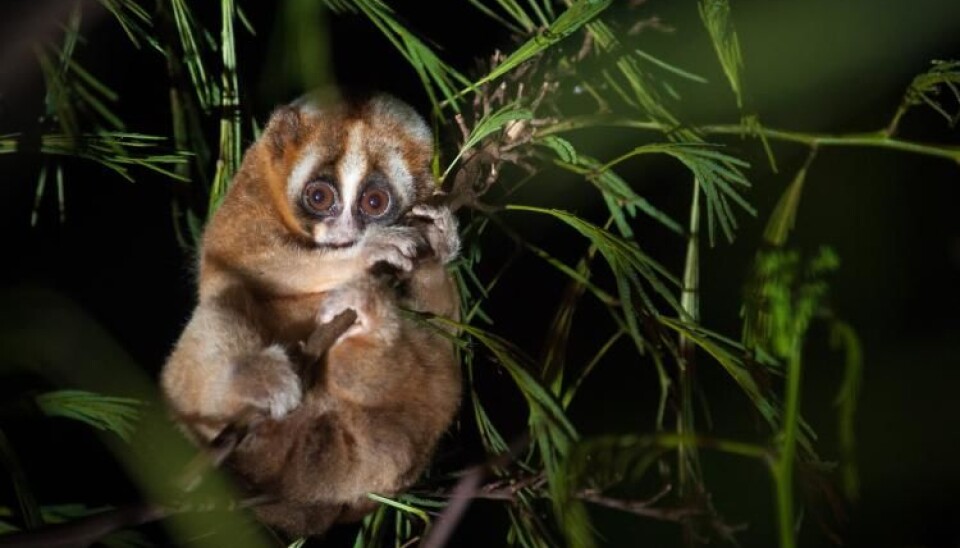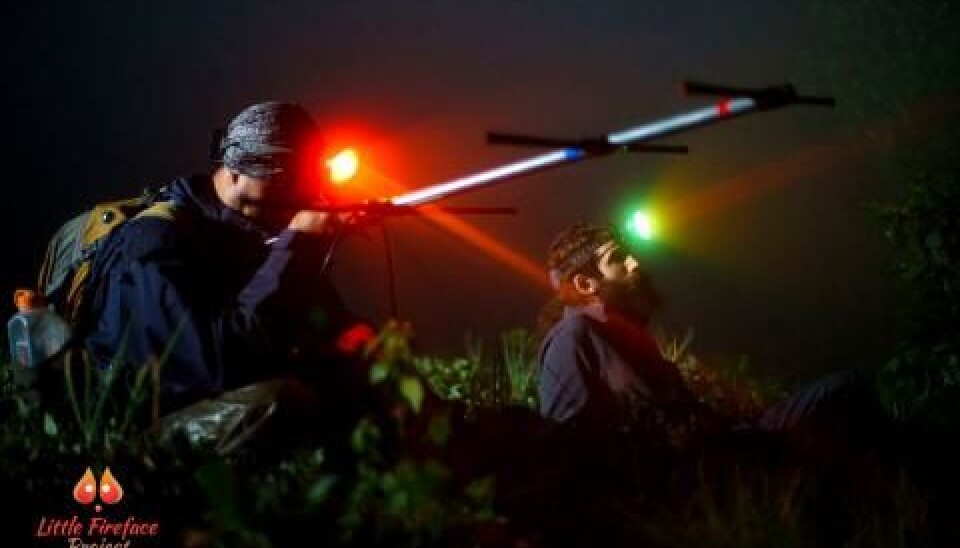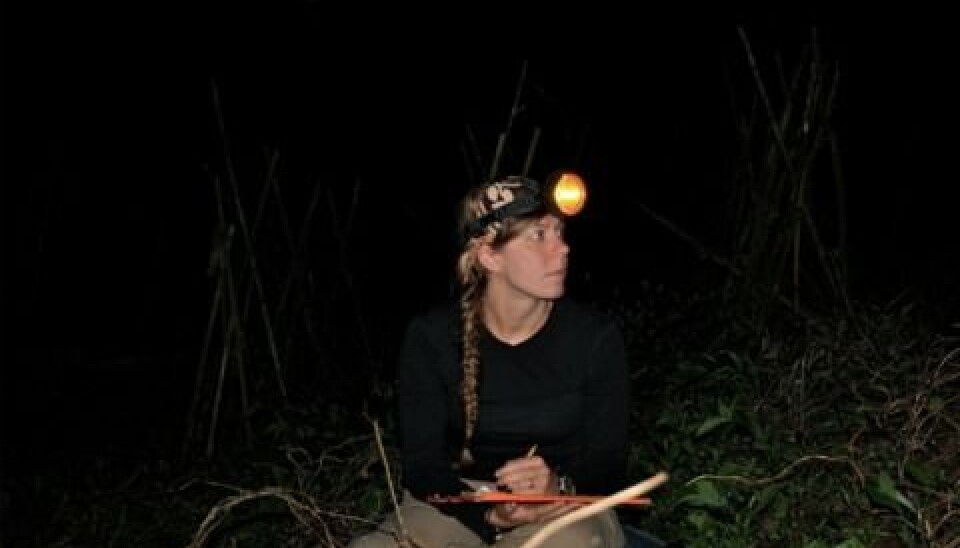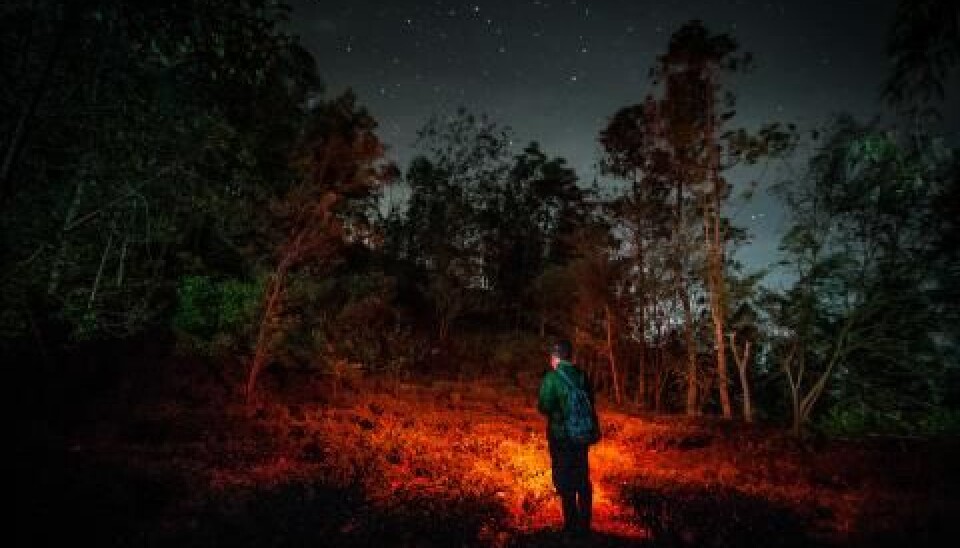This article is produced and financed by University of Oslo - read more

Slow loris study reveals: The human rhythm of sleep can be much older than expected
People typically sleep seven to eight hours in one stretch and stay awake for the rest of the day. Evolutionary scientists have assumed that this rhythm of sleep arose when our early ancestors went from being nocturnal to diurnal, but a new study of the Javan slow loris indicates that the human way of sleeping is much older.
The new study shows that the Javan slow loris (Nycticebus javanicus) sleeps in the same way as humans do, with most of the sleep in a long, continuous period. This suggests that this sleep rhythm is much older than we had previously believed, according to a pioneering study co-authored by Adriana Hernandez-Aguilar from the Centre for Ecological and Evolutionary Synthesis (CEES).
The study was led by Doctoral student Kathleen D. Reinhardt from Oxford Brookes University and CEES.
The nine species of the genus Nycticebus, to which slow lorises belong, are small and seemingly sweet, with soft fur, round heads and large eyes. But you would rather not be bitten by a “cuddly” slow loris, because their bite is venomous! Kathleen Reinhardt had to use thick gloves to catch wild Javan slow lorises in Indonesia, where she studied the animals' special sleep rhythms. The slow loris has glands on its forearms that excrete a toxic substance when the animal licks the gland, mixing it with their saliva.
"These are the only venomous primates we know about", says Hernandez-Aguilar.

Shooting holes in an established hypothesis
But it is neither the venom nor the big eyes that make the slow loris stars in the article recently published in the journal Nature Scientific Reports. The attention is instead due to the fact that the slow loris is the first nocturnal primate that has had its sleep rhythm studied in the wild.
Kathleen D. Reinhardt and her colleagues were very surprised when they discovered that the Javan slow loris sleeps in the same way as humans do (ie. for a long and continuous period).
“Humans and many other primates have what we call a monophasic sleep, which is defined by the fact that most of the sleep needs are covered during a single continuous period. So far, it has been common to believe that this rhythm of sleep arose when our primate ancestors switched from being nocturnal to being day-active”, explains Reinhardt. That probably happened more than 58 million years ago.
“But our observations of slow loris sleep rhythm now shoot a big hole in that hypothesis, because slow lorises display strict nocturnal behavioural patterns in between sunset and sunrise. The lorises belong to a very old group, so this indicates that the monophasic sleep rhythm could have occurred before the primates became diurnal. In other words, the special rhythm of sleep that characterizes man and many of our closest primate relatives seems to be a much older trait than previously thought”, states Reinhardt.

Individual variations
Both humans and other primates may of course have individual sleep patterns, but most adult humans need seven to eight hours of sleep during a 24-hour cycle. It is also quite common to take an afternoon nap or a siesta, and some may like to have a snack in the middle of the night.
“This is also the case, for example, of chimpanzees, who like to take an afternoon nap. They can also look for food in the middle of the night, if there is a full moon and good light. But the main principle is that we talk about monophasic sleep if most of the sleep needs are covered in one continuous period, explains Adriana Hernandez-Aguilar.
Cats and dogs and many other mammals instead have a polyphasic sleep pattern: They can sleep at any time, for short periods.
Monophasic sleep may have made us human
“There is a hypothesis that monophasic sleep is more effective because you sleep deeper and rest better – so you can cope with less sleep within a day. You will not be as refreshed by dabbing or sleeping in short periods, as you can, for example, during a boring flight. The monophasic sleep rhythm may therefore have contributed to making us human, with the large brains that characterize us”, Reinhardt explains.
Reinhardt had to do research at night, going against her diurnal lifestyle and monophasic circadian rhythm, while doing fieldwork in Java. She had to get around in the dark Indonesian forest at night, using red filter flashlights and head-torches (the lorises cannot see red light) to find the animals. The lorises were already equipped with small collars carrying radio transmitters that helped locate the animals – but Reinhardt’s work was still quite difficult.
“We monitored a total of seven slow lorises for a total of 321 days. In addition to the radio transmitters, the collars were also equipped with small sensors that recorded the animal’s locomotion to distinguish their active and inactive patterns, almost like a fitbit. The radio transmitters operated on individual frequencies, so that we were able to identify which animal any data came from”, says Reinhardt.

Field work in an agricultural area
The slow loris in general is an endangered species in the rainforest of Java. The individuals investigated in Reinhardt’s study however, lived in small forested areas that formed boundaries and transition zones between different crop fields, which is called an agroforest.
The farmers in the area are mainly pleased that the slow loris are close to their crop fields. Not primarily because they are sweet, but because the animals mainly eat gum, nectar, lizards, eggs and insects without harming the crops, and act as a pest control.
Falling asleep at sunrise
The data from the sensors on the seven slow lorises not only showed that the animals sleep monophasically; they also showed that the "bedtime" of the animals is governed by the light, anticipating sunrise in advance.
“It may seem a matter of course that the sleep rhythms follow the alternation between night and day, but there has not actually been very much research done on this. Therefore, it is interesting that our data shows a close link. Slow lorises take naps during their active period, similarly to humans, when they had a disruption in their regular sleep patterns. This is of course a midnight nap instead of an afternoon nap”, Reinhardt emphasizes.
The data also show that temperature changes disrupted their naps, affecting their overall activity patterns and sleep need.
The lorises do not make beds (nests) as great apes do. Instead, they grab more or less horizontal branches of bamboo or trees in the forests where they live.
"They have a special morphological trait (retia milabile) that, together with the structure of their fingers, allow them to stabilize themselves around a small branch with their hands and feet for several hours without exerting themselves," says Reinhardt.
Reinhardt states that, strictly speaking, she has not directly measured the different phases of sleep. To do this, an animal would have to be equipped with electrodes on the head, and that would be more or less impossible for technical reasons – and difficult for ethical reasons. Instead, the researchers used sensors that monitored the animals' movement, and then they used immobility as a measurement to determine the likelihood of an individual to be asleep. This is a well-documented method, which is also used by the activity meters that many people use daily.

From discoveries to conservation
Slow lorises are critically endangered, partly because there is ongoing logging in the southeast Asian rainforests. Moreover, people like to have them as pets, despite the fact that the lorises are poorly suited as pets, and trafficking with endangered species is strictly prohibited.
Adriana Hernandez-Aguilar says that little research has been done on the slow lorises and the other prosimians in comparison with monkeys and apes. The reason may be that the latter animals have been perceived as more interesting, because they are more like us humans. But if we want to know more about the early stages of the evolution that ultimately led to humans, it is important to study the lorises and other prosimians because they are an older group, she believes.
“Perhaps more knowledge can also help protect these primates from extinction. If we go all the way back to the 19th century, when Charles Darwin travelled to the Galapagos Islands, biology was about discovering new and exciting species. That phase was by all means important for our knowledge of biology today. But in the present, more and more scientists are becoming increasingly concerned that we must use our knowledge to preserve nature. Researchers now have a responsibility they did not have before, which is to work for the conservation of the animals we study”, says Hernandez-Aguilar.
The study was performed under the remit of Oxford Brookes University Professor Anna Nekaris’ Little Fireface Project in Java, Indonesia, in collaboration with researchers from Oxford University and Indonesian Gadjah Mada University.


































